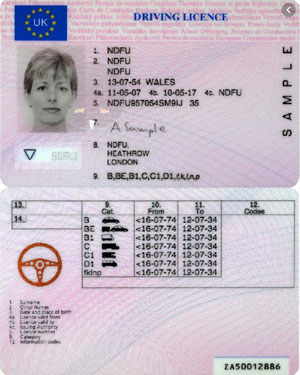Thinking about visiting Europe in your leisure vehicle but nervous?
– Take the plunge and do it you won’t regret it.
We have put together some useful tips that we hope will help.
Europe is probably one of the best places in the world to explore with a leisure vehicle, and we love it. Few places in the world offer the diversity of culture, history, food, drink and language that Europe offers.
Planning your trip to Europe
Know your Vehicles Dimensions
Measure the height, width and length of your vehicle. Measure your vehicle yourself. Don’t rely on the manufacturer details, as they can be wrong and you may have additions which can change the original dimensions.
We keep this information printed on a laminated card tucked into the sun-visor. That way, it, is at hand if we ever come across a narrow gap or a low bridge.
Check your vehicle insurance
Check that your existing policy adequately covers you to travel to Europe.
Even if you have a comprehensive policy in the UK, you may find that you are only covered for third party, fire and theft when in Europe. Get in touch with your insurer to check this. If you are not fully insured, ask for a higher level of protection which you may have to pay extra for.
Our motorhome insurance is with Safeguard, and we have been pleased with the price they quote each year and the service they provide. We are covered fully comprehensive when in Europe. There are also no time restrictions, and breakdown cover is included. (We have had to call them out several times over the past six years).
If your insurer doesn’t extend your policy, you might be able to add European cover as an optional extra, which usually covers you for up to 30 days.
Don’t forget to check the small print for any exclusions on your policy, as some will put a cap on the number of days you are fully insured while in Europe.
You will need to ask your insurer for a Green Card if you are driving in Europe which will act as proof of your European cover. This card is free.
Driving abroad in the event of a no-deal Brexit
When the UK leaves the European Union, drivers to Europe are urged to ensure they have correct documents in place. Until new agreements with EU countries are finalised, drivers risk breaking the law without them.
Paperwork – Legal Requirements
Here is a list of all the paperwork you need to carry in your motorhome.
We prepare a travel folder to keep everything together. It all stays in the folder even when we are at home so that it is ready for our next trip out.
In France, the fines for speeding or incorrect paperwork has to be paid in cash on the spot; otherwise, the police escort you to the nearest police station.
Legal Requirements
- Full driving licence
- International Driver Permit (See below).
- Green card for vehicle – Insurance companies are providing these free of charge.
- Insurance documents for the vehicle. These need to be the original documents, not a photocopy. (We also keep a copy on our phone).
- Authorisation letter if it is a company car.
- Car registration document (V5) or paperwork confirming you are allowed to take the vehicle to Europe (These must also be the original documents).
- Passports – Check that your passport is still in date. Some countries demand that the expiry date on the passport must be at least six months beyond your estimated day of return. This is also the case if we crash out of Brexit.We keep a copy of our passports and copies of all the other important documents above in a folder on our phone.
When you book into a campsite, they usually keep your passport until you have paid although many accept a good photocopy. We have laminated a photocopy of our passports which we hand into reception. We have had no problem doing this and are happier than leaving our passports.
- Pet paperwork and passport if taking a pet.
Recommended
- Breakdown policy documents
- Travel Health Insurance Documents
- European Health Insurance Card (EHIC) – For EU citizens only.While we are still in the EU, you should apply for and take a free EHIC health care card with you to Europe. The card entitles you to free or reduced-cost health care in most European countries. In the UK you can apply online at http://www.ehic.org.uk/. Alternatively, you can apply by calling 0845 606 2030 or pick up an application form from the Post Office.
If we leave the EU with a deal… you will continue to get state-provided healthcare in the EU if you have a free EHIC at least until the end of a ‘transition period’ – likely the end of 2020.
If we leave the EU with no deal… the UK Government is working with EU member states to maintain the same level of cover as provided by the EHIC, but your card may not be valid on exit day.
For now, you can carry on using the scheme as normal.
International Driving Permit for driving in Europe
Licence requirements when driving in Europe in the event of a no-deal Brexit

While we are still in the EU, you can use your UK driving licence to drive within the EU/EEA. If you drive outside of these countries or are travelling after the UK leaves the EU, you’ll need an international driving permit (IDP).
You can purchase an IDP from your local Post Office, and the cost is approximately £5.50. Once you have it, your International driving permit is valid for a full year. If you like to be prepared and get it well in advance of your trip, you can delay the start date of your IDP for up to three months.
Make sure you take along your driving licence, a passport-sized photo that you’ve signed on the back and another proof of ID, e.g. your passport.
To be eligible for and International Driver’s Permit, you must be over 18 years of age, be a UK resident and have a valid, full UK driving licence.
What would happen if you drove without an IDP?
This would vary by country, but the chances are that you could be hit with a fine or have your vehicle confiscated if you are not able to produce a valid IDP with your driving licence.
What is an international driving permit?
An IDP lets you drive in over 140 countries, including the USA. It is used as a complement to your UK driving Licence, not a replacement. You should make sure you have both with you when you drive abroad.
Different countries have different rules around driving permits, and it can be a little confusing as to which permit you will need.
If you’re travelling to the following EU countries, you will need the newly created 1968 IDP:
Austria
Belgium
Bulgaria
Croatia
Czech Republic
Denmark
Estonia
Finland
France
Germany
Greece
Hungary
Italy
Latvia
Lithuania
Luxembourg
Netherlands
Norway
Poland
Portugal
Romania
Slovakia
Slovenia
Sweden
These EU countries require a 1949 IDP:
Cyprus
Iceland
Ireland
Malta
Spain
You may need a 1926 IDP if you are driving through Liechtenstein.
So as you can see if you are travelling between countries e.g. from France to Spain, you will need two separate permits.
Any country outside the EU may also require an IDP. You can see the full list of countries on GOV.UK.
If the country you are visiting isn’t one of those that recognise the IDP, it is best to get in touch with the local embassy for specific rules on driving there.
Recommended kit and equipment
The following are legal requirements in some countries.
- First-aid kit
- Red warning triangle. – In France, Spain and Germany, you are required to carry a red warning triangle. Should you breakdown the triangle must be erected 30 metres behind the car. In Spain, you need 2 red warning triangles per car.
- Bulb kit. – In Spain, you are required to carry a set of spare lamps/bulbs for your car.
- Tool kit – to change the lamps/bulbs.
- A High visibility vest for the driver and each passenger. – Keep them readily accessible as you have to wear them if you breakdown under French law. We keep ours in the door side panel, so they are easy to grab quickly if we do breakdown. If the police catch you waiting beside the car without one, you could face a fine.
- Torch
- Fire extinguisher
- Two NF approved Alcohol Breathalysers,
- Snowchains or winter tyres at certain times of the year.
- Toll Pass (EMovis). This is a brilliant time-saver at the toll booths. It bills your card directly and sends a monthly statement which is much easier than trying to find the correct change.
Vehicle Preparations before leaving for your trip
- Service your vehicle
- Check the water, oil and coolant level
- Check tyre pressures and thread
- Check the fluid in washer fluid reservoir
- Check the wheel nuts on a caravan
- Check windscreen wipers
- Check anything fixed to the outside of the motorhome is secure, i.e. bikes.
- Check all door locks on lockers and the garage work and are secure.
- It is much easier to get them fixed before you leave than while you are away in Europe.
- Also check the fridge, solar panel, heating, water, toilet batteries etc. again giving yourself enough time to get it fixed before you travel if needed.
- Make sure your car displays a GB sticker or its visible on your number plate.
- You will also need to convert your headlights with a beam converter kit that you stick over your headlamp, so they don’t dazzle oncoming drivers while being driven on the opposite side of the road.
If you haven’t already got one get a motorhome sat-nav. We use TomTom trucker which gives us the ability to input the height and width of our motorhome and also the weight. Another advantage is that It has European maps.
You should not just rely on a sat nav as they can sometimes go wrong. We also carry maps on board.
Driving motorhomes and the law
Make sure you are legally allowed to drive the motorhome.

The first thing you need to do is check when you first passed your driving test.
If it was before 1st January 1997 (and you’re not yet 70), you would automatically be able to drive a heavier motorhome than if you passed after that date.
You will automatically have category C1 entitlement on your licence, allowing you to drive vehicles up to 7,500kg.
Your driving licence will show the categories you are entitled to drive on the back of the pink photocard.
If you passed your test after 1st January 1997 the standard driving licence issued to a driver passing his or her test today covers categories B and B1. This means you can drive a vehicle up to 3,500kg (B) and tow a trailer up to 750kb behind it.
If you want to drive a larger motorhome (up to 7,500kg), you will need to pass an additional driving test to add the C1 category to your licence.
When you are 70 years old
When you reach 70, you need to renew your driving licence. If you use the standard renewal procedure, you will lose your C1 entitlement, and you will no longer be able to drive motorhomes between 3,500kg and 7,500kg. To avoid this, ask your GP to fill in a medical report form D4. Unfortunately, your GP is likely to charge for this service.
Find out more about driving licences on the Directgov website.
Best time to visit Europe
We usually visit Europe twice a year for three months – April until the end of June and September to the end of November. Unfortunately, we have to stick to 90 days for each trip which is the longest we can get on our health insurance before the prices rise steeply.
We consider these to be the best months to visit Europe because campsites are not too busy.
The beauty of motorhoming in these periods is that we can turn up at a campsite without pre-booking. We inform the campsite reception the most extended period we may stay, but we can leave before then. We pay the day we leave, or some campsites require us to settle our bill the night before.
The only exception to this is the occasional bank holiday in the country we are visiting. We usually look these up on google before we leave and enter them in our calendar so that we are not caught out.
When there is a public holiday, we make sure we are on a site and not travelling that day as the roads are busier and the campsites get full.
We also ensure that we are stocked up with food as the supermarkets and smaller grocery stores tend to close for this period.
Try to avoid July and August if you can. The majority of Europeans holiday during these months. These are the months you would most definitely need to book your sites in advance.
Do research
Do at least some research about the regions you want to visit. I now google to find out about the weather, festivals or anything else that may affect our visit.
Our trip to Merville-Franceville in Normandy last year was stressful trying to find a campsite that had spaces as they had their annual Festival De Fantasy (Cider and Dragon Festival) on which meant most campgrounds in the area were full. We were lucky, and one of the sites squeezed us on, and we had a fantastic weekend.
We had a change of plan with our current trip (Sept 2019). We didn’t check the weather in the Netherlands until the day before we left. The weather forecast was for rain the whole of our first week, so instead, we headed further down to Lake Annecy where the weather forecast was much better.
That’s the beauty of motorhoming though you can change your mind at the last minute and you can chase the sun.
Depending on how long you intend to be away check that your home insurance is still valid for that period of time. We had to change our insurance to one that would cover us for the house being empty for 90 days. I think a lot of house insurances will only cover you for 30 days away.
We now rent out our house out through an agent which gives us more spending money while we are away.
Holiday Money
We load our Cash passport up which we got from our local Tesco travel currency desk before we leave and carry a bit of cash which we hide in small amounts around the motorhome. We try to use the card where possible for petrol, campsites, meals out and groceries so that we don’t have to use the ATM’s too much. Occasionally a campsite doesn’t accept cards so you need to be prepared with some cash.
We have a Halifax Clarity credit card which is useful for any extras we may purchase (in my case clothes, shoes and bags) also we have found it useful when we have had large expenses i.e. new clutch for the motorhome one year, new water heater oh and another year it was new tyres after a blow out.
The card offers no fees on overseas spending, though ATM withdrawals incur interest even if you pay off the card in full – so best not to use it for cash withdrawals. We always repay in full to minimise the 19.9% APR.


















